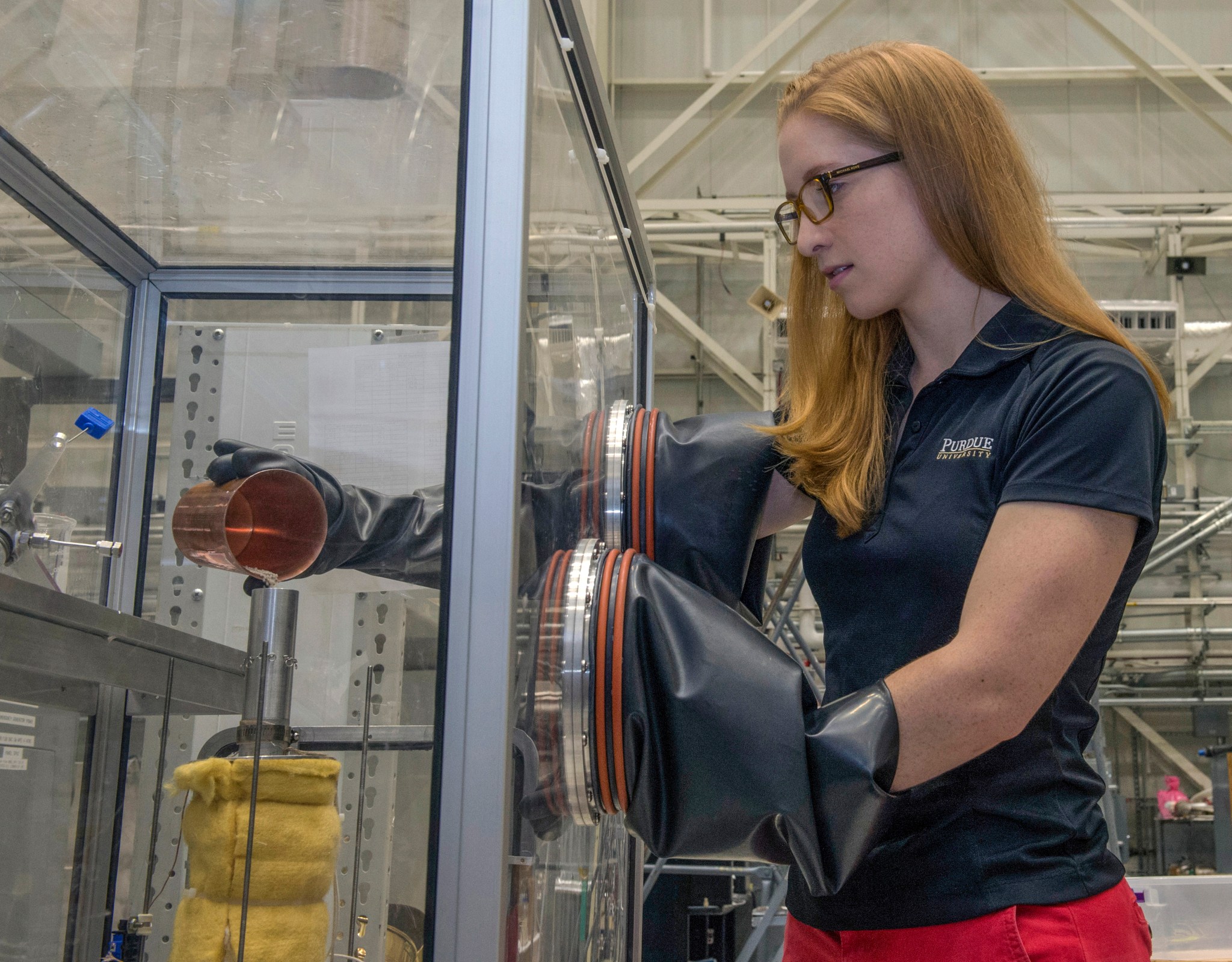Preserving air quality inside NASA’s space systems is vital to space habitation. Karen Son, a NASA Space Technology Research Fellow from Purdue University in West Lafayette, Indiana, has worked with NASA’s Marshall Space Flight Center in Huntsville, Alabama, to help the agency improve the carbon dioxide (CO2) removal system used aboard the International Space Station and in future deep-space explorations.
The current CO2 removal system on the space station, the Carbon Dioxide Removal Assembly, contains beds filled with thousands of tiny beads called adsorbents. These beads act as a filter to remove, or scrub, carbon dioxide from the air as part of a larger process called atmospheric revitalization, providing clean air for astronauts.
“Atmospheric revitalization is important anytime we have an enclosed structure without ventilation. We must remove the carbon dioxide so we can continue to use the oxygen,” said Son. “Space habitats, submarines and even some airplanes have atmospheric revitalization systems to purify the air we breathe.”
One way NASA is looking to improve this system is by researching different sorbents to find the most efficient type, and to increase the reliability of the system, reducing the amount of sorbent needed. “When we go to Mars, we need more efficient systems that require less maintenance,” said Son. Son’s work has focused on testing different types of sorbents in a virtual laboratory to determine which is most effective at removing carbon dioxide from the atmosphere.
“Right now, we are in low-Earth orbit, and if we have a system failure, we have launch vehicles that can send backup parts for maintenance, or in a worst-case scenario, astronauts can return to Earth,” said Jim Knox, aerospace engineer for the Environmental Control Life Support Systems department at Marshall. “Once we are headed to Mars, we don’t have the option of resupply or return until we make the loop around Mars, which can take up to two years. It’s like backpacking — whatever we take up is what we have for the trip.”
Knox spent the last two years working with Son during her fellowship. “Karen is highly motivated and curious about how things work,” said Knox. “She is very detailed in her documentation, and the virtual test models she creates help us understand how much we can trust our test data.”
Son presented her research to the Marshall community in a crowded conference room of Building 4220 on Aug. 14. Her plan is to return to Purdue University to continue her work and complete her dissertation for graduation from the doctoral program in 2018. During her time at Marshall, John Sharp, branch chief for the Spacecraft and Vehicle department, served as her research collaborator for the fellowship program. Knox, along with Greg Schunk, technical assistant for the Spacecraft and Vehicle department, acted as her day-to-day technical mentors.
NASA fellows perform innovative, space-technology research at their respective universities, NASA centers, or at nonprofit U.S. research and development laboratories. Awards are made as training grants to the fellow’s university on behalf of the individual pursuing a master’s or doctoral degree, with the faculty advisor serving as principal investigator. For more information on the NASA Space Technology Research Fellowship program, contact hq-nstrf-call@mail.nasa.gov.
To learn about application deadlines and internship opportunities at NASA centers, click here.



























